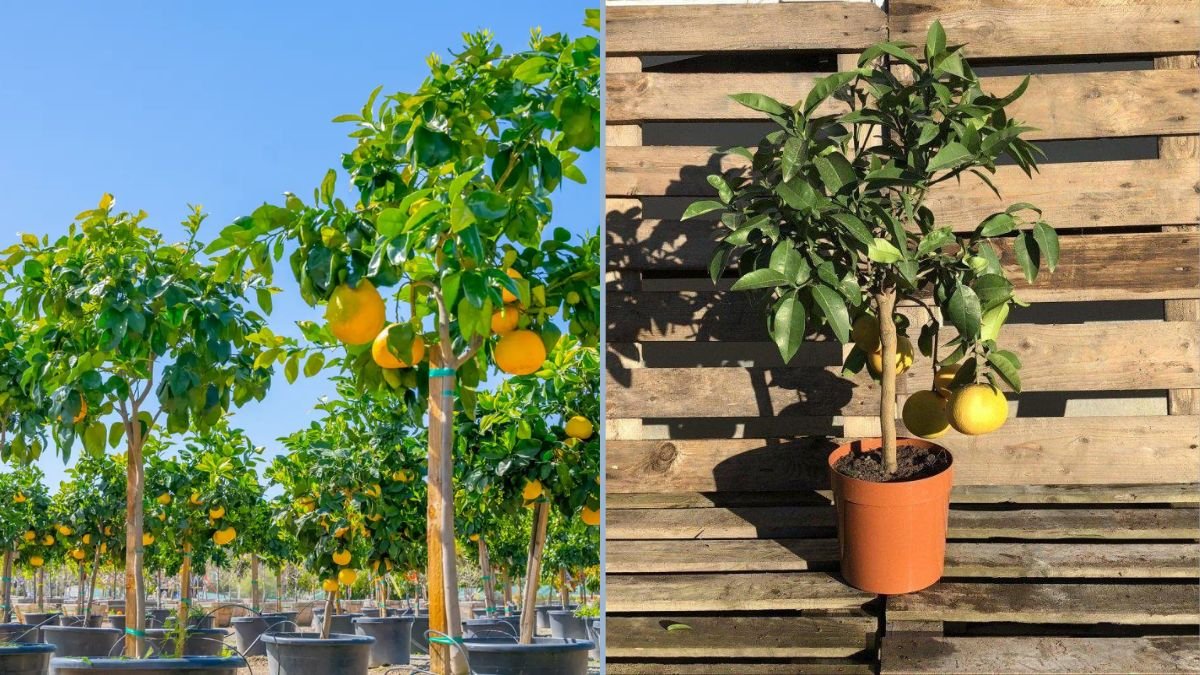Citrus gardening is a rewarding hobby that combines ornamental beauty with delicious fruit production, and few things are as satisfying as harvesting your very own pink grapefruits. Dwarf grapefruit trees are ideal for small gardens, patios, or container growing, yet they can produce an impressive yield of juicy, sweet fruits.
In this post, we’ll explore how to successfully grow pink grapefruits on a dwarf tree, from planting and care to fruiting, pest management, and harvesting. Whether you’re a beginner or a seasoned gardener, these tips will help you enjoy your own vibrant, tasty citrus harvest.
Why Choose a Dwarf Pink Grapefruit Tree?
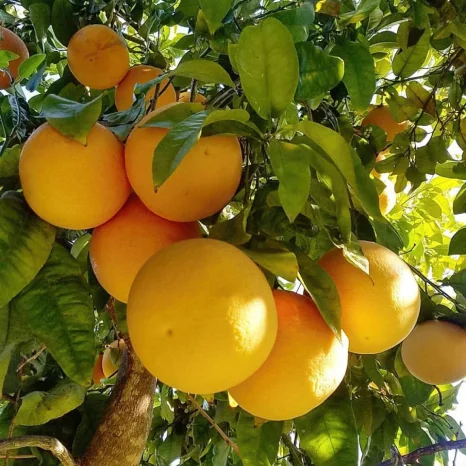
Dwarf grapefruit trees offer several advantages over standard citrus varieties:
- Space-Saving: Perfect for patios, balconies, or small gardens.
- Manageable Size: Easier to prune, harvest, and protect from frost or pests.
- Early Fruiting: Dwarf trees often bear fruit sooner than full-size trees.
- Container-Friendly: Can be grown in large pots or raised beds for mobility.
- Ornamental Value: Glossy leaves, fragrant blossoms, and colorful fruit enhance garden aesthetics.
Pink grapefruits, in particular, are cherished for their sweet, slightly tart flavor and striking pink flesh, which adds a splash of color to your homegrown fruit collection.
Understanding Dwarf Pink Grapefruit Trees
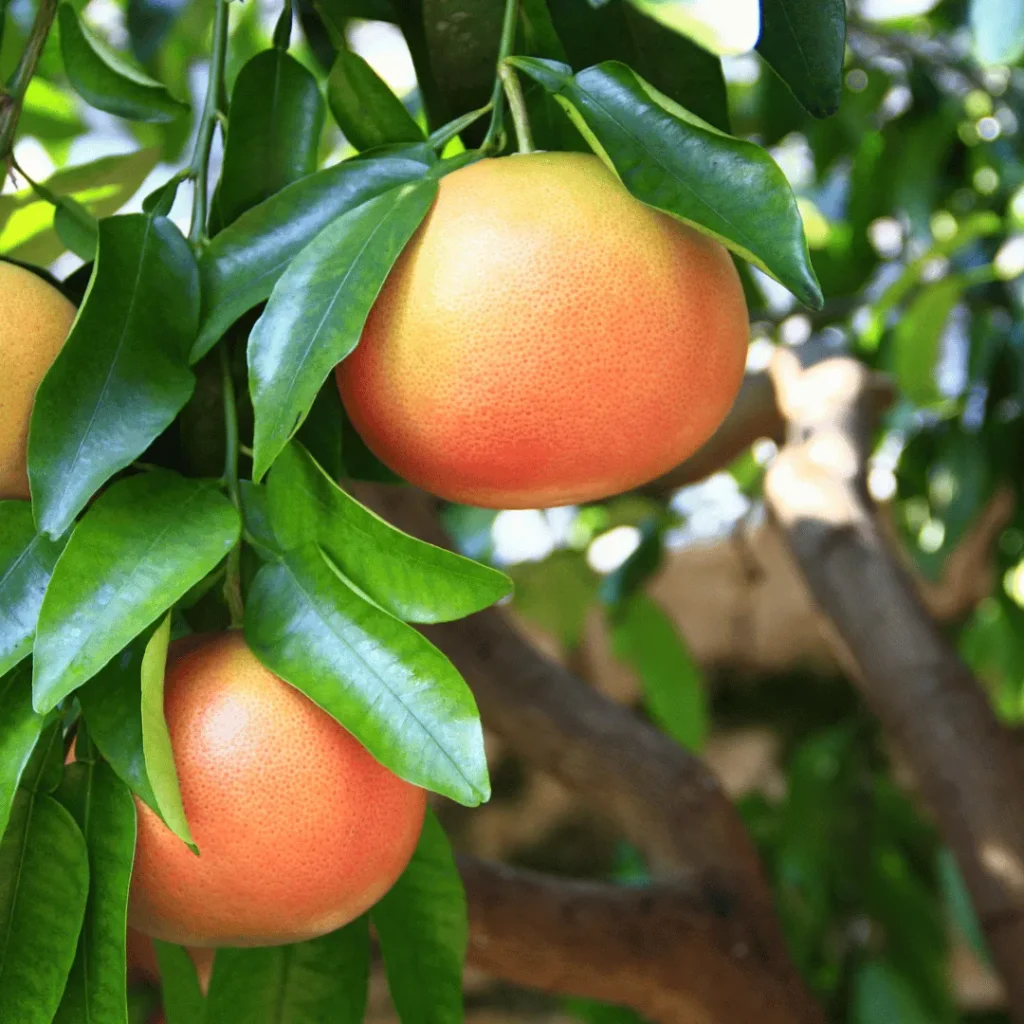
Dwarf grapefruit trees are usually grafted onto dwarfing rootstocks, which limit their size without compromising fruit quality or yield. These trees generally grow 6–10 feet tall, making them easy to care for in smaller spaces.
Key Characteristics:
- Leaves: Glossy, evergreen, deep green leaves.
- Flowers: Fragrant white blooms in spring, attracting pollinators.
- Fruit: Pink-fleshed grapefruit, medium to large, with juicy and flavorful segments.
- Growth Rate: Moderate; dwarf trees may produce fruit 2–3 years after planting.
Understanding these traits helps in providing proper care and maximizing fruit production.
Choosing the Right Container or Planting Site
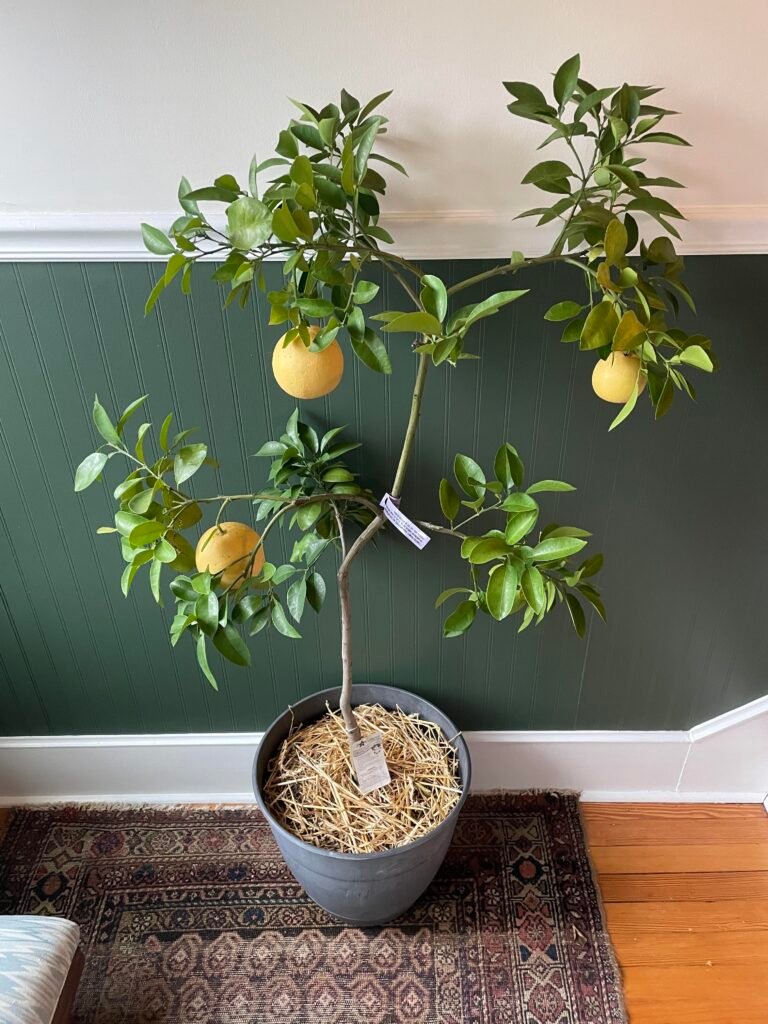
Dwarf trees are versatile, but location and container choice are critical:
Container Selection
- Use a 12–20 inch diameter pot for young trees.
- Upgrade to a 24–30 inch container as the tree matures to provide ample root space.
- Ensure good drainage holes to prevent waterlogging.
- Lightweight plastic or resin pots are easier to move, while terracotta adds aesthetic appeal but dries out faster.
Planting in the Ground
- Choose a sunny spot with at least 6–8 hours of direct sunlight daily.
- Ensure well-draining soil enriched with compost or organic matter.
- Plant the tree with adequate spacing—at least 8–10 feet from other trees or structures.
Soil Requirements
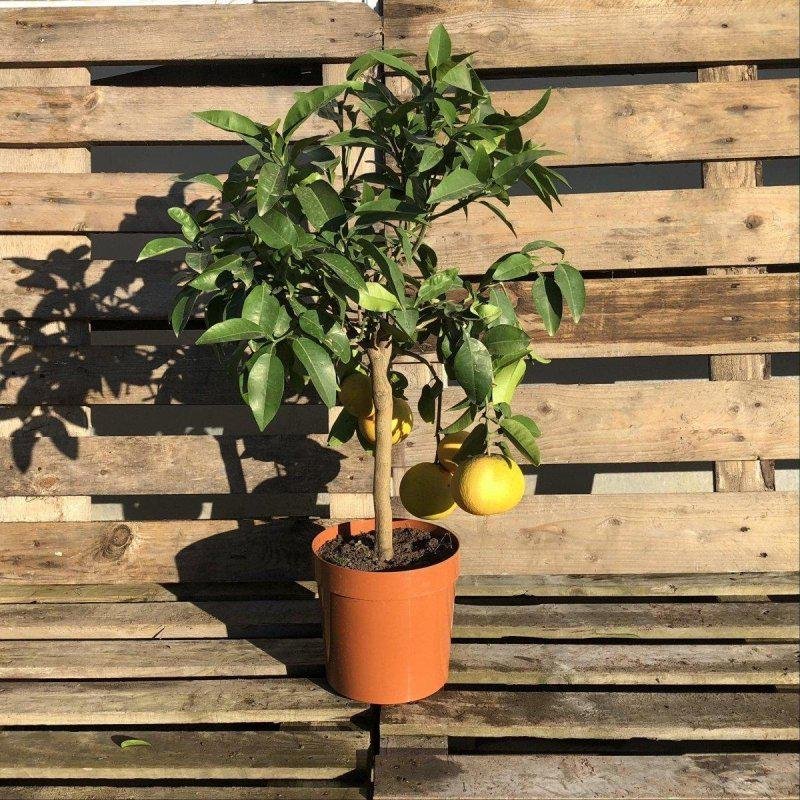
Pink grapefruit trees thrive in well-draining, fertile soil:
- pH: Slightly acidic to neutral (6.0–7.0).
- Texture: Loamy or sandy soils that allow water to drain freely.
- Amendments: Incorporate compost, peat moss, or aged manure to improve fertility and structure.
Proper soil prevents root rot, nutrient deficiencies, and poor growth, particularly in container-grown trees.
Planting Your Dwarf Grapefruit Tree
Planting correctly ensures healthy root establishment and future fruit production:
- Prepare the Container or Hole: For ground planting, dig a hole twice the width of the root ball.
- Amend the Soil: Mix native soil with compost for nutrient support.
- Position the Tree: Place the tree upright, keeping the graft union above soil level.
- Backfill: Firm soil gently around roots without compacting.
- Water Thoroughly: Ensure moisture reaches the entire root zone.
- Mulch: Apply 2–3 inches of mulch around the base to retain moisture and regulate soil temperature, keeping it away from the trunk.
Watering Requirements
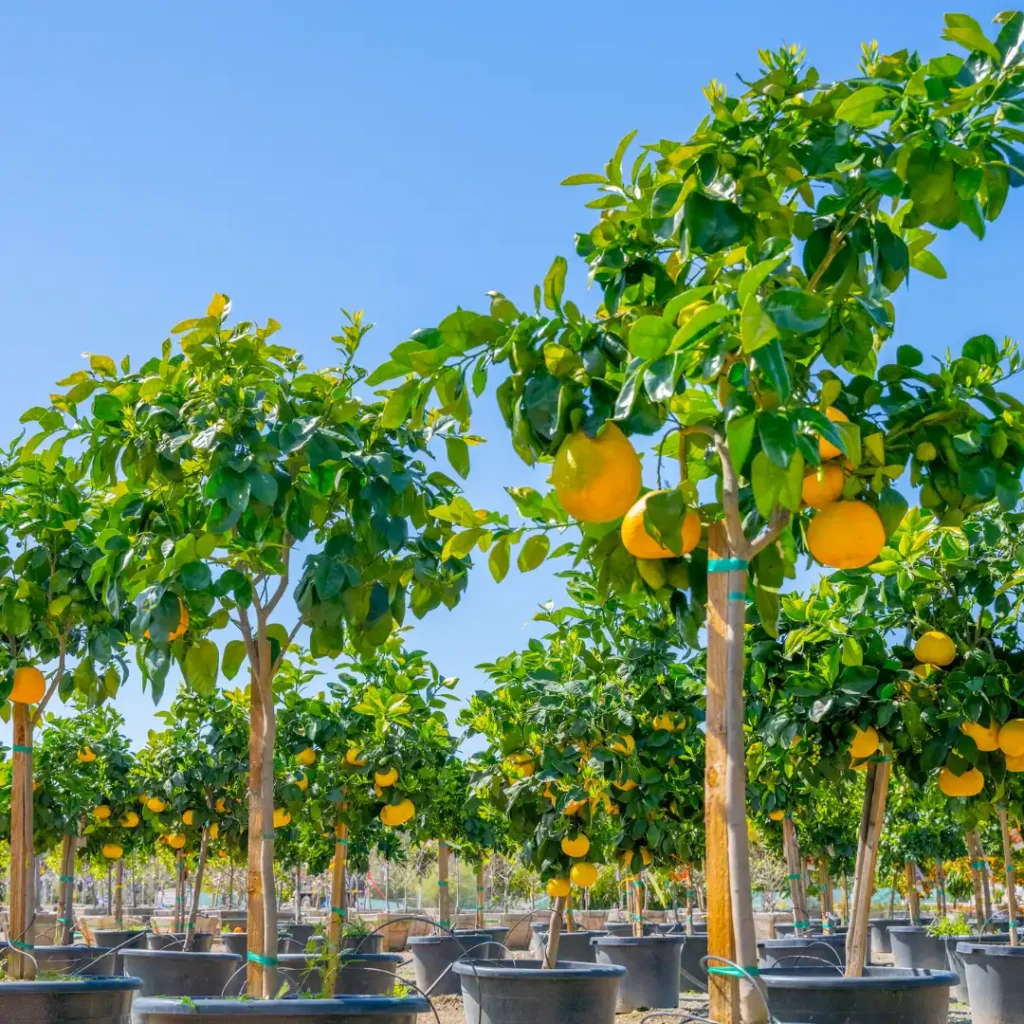
Watering is crucial for container-grown and ground-planted trees:
- Young Trees: Keep the soil consistently moist to establish strong roots.
- Mature Trees: Allow the top 2 inches of soil to dry between watering.
- Container Considerations: Potted trees dry faster than in-ground trees, requiring more frequent watering.
- Drainage Check: Ensure excess water can escape to prevent root rot.
Mulching helps retain soil moisture, especially in hot or dry climates.
Fertilization and Nutrition
Pink grapefruit trees require regular feeding for healthy growth and fruit development:
- Use a citrus-specific fertilizer with nitrogen, phosphorus, potassium, and micronutrients like magnesium and iron.
- Fertilize every 6–8 weeks during the growing season (spring through fall).
- Reduce fertilization during the dormant winter months.
- Monitor leaf color for deficiencies—yellowing can indicate a lack of nitrogen or iron.
Balanced nutrition ensures lush foliage, abundant blooms, and juicy fruit.
Pruning Your Dwarf Tree
Pruning helps maintain shape, airflow, and fruit quality:
- Remove dead, damaged, or crossing branches.
- Thin the canopy lightly to allow sunlight to penetrate.
- Avoid excessive pruning, as grapefruit trees fruit on both new and mature growth.
- Train the tree in a compact shape for container growing.
Proper pruning ensures manageable size and improved fruit production.
Pest and Disease Management
Even healthy dwarf grapefruit trees can encounter pests and diseases:
Common Pests
- Aphids: Feed on new growth; treat with insecticidal soap.
- Scale Insects: Appear as bumps on stems; manage with horticultural oil.
- Spider Mites: Cause stippling and leaf damage; water sprays or miticides help.
Common Diseases
- Citrus Canker: Causes lesions; prune affected areas and use preventive sprays.
- Root Rot: From poor drainage; ensure well-draining soil and avoid overwatering.
- Greening Disease (HLB): Serious bacterial infection; plant disease-free nursery stock.
Regular observation and early treatment maintain tree health and fruit quality.
Flowering and Fruit Development
Dwarf grapefruit trees produce fragrant white blossoms in spring:
- Pollination: Self-pollinating, but bees improve fruit set.
- Fruit Growth: Fruits develop over 6–9 months, gradually enlarging and coloring.
- Care Tips: Provide consistent water and fertilizer during flowering and fruit set for larger, sweeter fruit.
Harvesting Pink Grapefruits
Timing is key for sweet, juicy fruit:
Signs of Ripeness
- Color: The skin turns yellow-orange with a slight pink blush.
- Firmness: Slightly soft to the touch.
- Ease of Picking: Fruit should come off easily with a gentle twist.
- Taste Test: Sweet-tart flavor indicates readiness.
Unlike some fruits, grapefruit does not continue to ripen significantly after picking, so harvest at peak maturity.
Enjoying Your Dwarf Pink Grapefruit
Pink grapefruits are versatile and delicious:
- Fresh Eating: Peel and enjoy directly.
- Juicing: Perfect for breakfast juice or smoothies.
- Cooking: Add to salads, desserts, or marinades.
- Garnishing: Use slices in beverages or decorative platters.
Homegrown grapefruit is more flavorful and aromatic than store-bought varieties, providing a rewarding harvest.
Tips for a Thriving Dwarf Grapefruit Tree
- Sunlight: Ensure 6–8 hours daily.
- Watering: Maintain consistent moisture without waterlogging.
- Fertilization: Use citrus-specific fertilizers regularly.
- Pruning: Maintain shape and improve light penetration.
- Pest Management: Inspect regularly for early intervention.
- Container Care: Move trees indoors or to protected areas during frost.
- Mulching: Retain soil moisture and regulate temperature.
By following these steps, your dwarf tree will thrive and produce beautiful, tasty pink grapefruits for years.
Conclusion
Growing pink grapefruits on a dwarf tree is both rewarding and manageable, even for small-space gardeners. These trees combine ornamental beauty with delicious, juicy fruit, making them a standout in any garden or patio.
From planting in a suitable container or garden spot to proper watering, fertilization, pruning, and pest management, each step contributes to healthy growth and a bountiful harvest. With patience and care, your dwarf grapefruit tree can become a long-lasting source of fresh, sweet, and aromatic pink grapefruits, delighting your family and friends.
Whether enjoyed fresh, juiced, or in culinary creations, homegrown grapefruit offers superior flavor and satisfaction, rewarding gardeners with every bright, juicy harvest.
